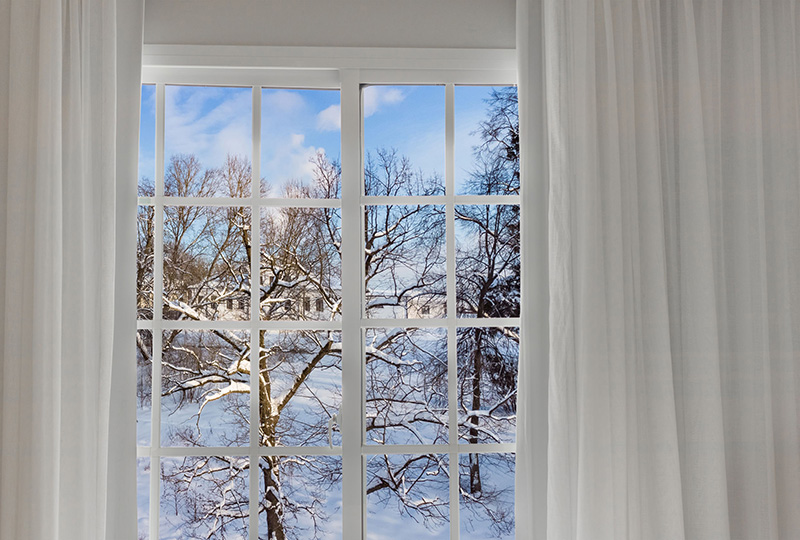Do you need new windows to keep out the cold?

When the bitter cold of a Nebraska winter settles in for a bit, homeowners often start thinking about ways to keep their homes warm without running up their power bills.
Windows are one of the biggest culprits when it comes to heat loss in a home. Insulation is measured by R-value: the higher the value, the better the insulation is at preventing the flow of heat. The R-value of windows ranges from a 6 to a 9, whereas a wall can have an R-value two to three time as high.
When temperatures plummet, it’s not unusual to start thinking about whether you should replace your windows. However, replacing windows for the sole purpose of saving energy is difficult to justify when you consider the expense versus the savings (i.e., payback period).
Unless there is structural damage to your windows – where you can feel air coming through or water when it rains – replacing your windows can be a costly measure with a long payback period. It could take up to 20 years before you recover your investment and start actually saving money.
Increasing energy efficiency
If your windows are in good condition but you’d like to improve your home’s energy efficiency, consider some of these suggestions from the U.S. Department of Energy and OPPD Energy Advisor Eric BenSalah:
- Check your windows for air leaks.
- Caulk and weatherstrip. There are different kinds of weather stripping – rope caulk, foam stripping, etc. They reduce the flow of air across areas of the window that are prone to leakage, such as the bottom of a window sash where it meets the frame.
- Add energy efficient window coverings. Windows that do not receive direct sunlight in the winter are best kept covered with blinds and curtains. Insulated curtains are especially helpful. The tighter the curtains are to the window frame itself on the inside, the less heat transfer that will occur. This works for both cooling and heating months. It can still be helpful to open blinds/curtains to direct sunlight in the winter. However, if the windows are drafty or the temperature is below zero, you are better off staving off the heat loss from inside the home by keeping the windows covered.
- Add storm windows or panels.
- Add window kits. Covering particularly drafty windows with a window kit can reduce cold drafts, increase the low R-value of a window and reduce heat loss during the winter.

Julie Wasson is the brand journalism strategist at Omaha Public Power District and the editor of The Wire. She has more than 25 years of print journalism and social media experience, including two stints at the Omaha World-Herald.
View all posts by Julie Wasson >







